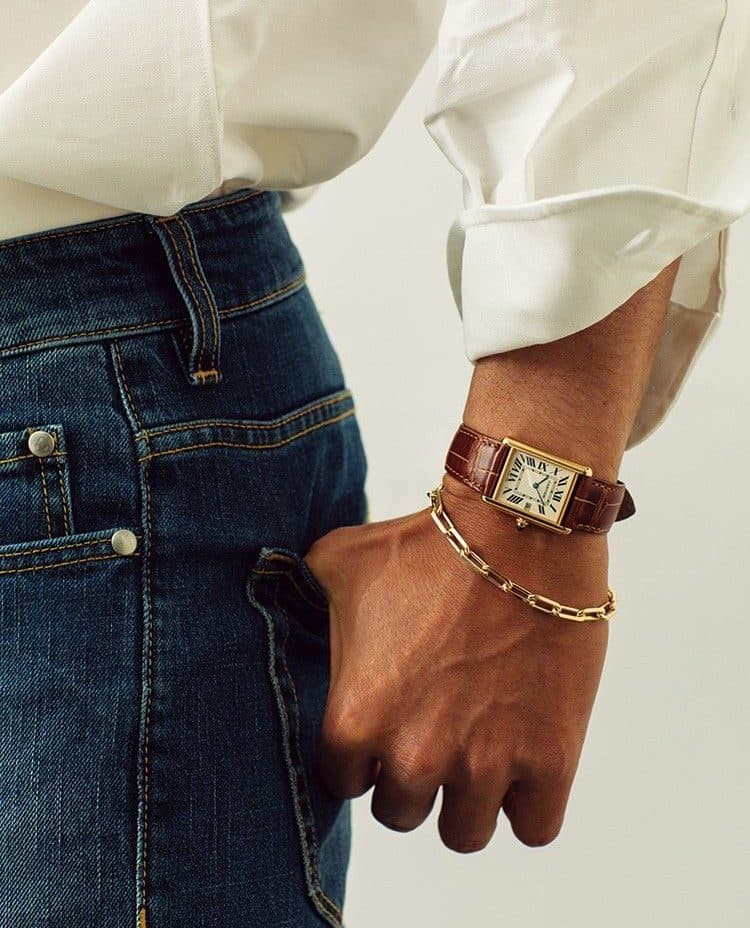[vc_row njt-role=”people-in-the-roles” njt-role-user-roles=”administrator,editor,author,armember”][vc_column][vc_column_text]
The new Deloitte study shows that the Swiss used watch market is driven by millennials, generation Z and the rise of e-commerce.
The second-hand watch market, which is growing rapidly thanks to millennials and Generation Z, could be worth 35 billion Swiss francs by 2030, according to a study by Deloitte on the outlook for the Swiss watch industry released last week.
Currently valued at around 20 billion francs, the second-hand market could account for more than half of the watch market by 2030, the study said. “The growth potential of the second-hand market is huge,” said Karine Szegedi, head of consumer, fashion and luxury goods at Deloitte Switzerland, quoted in a release.
Among the main reasons for buyers to acquire a second-hand watch, the price is cited, but also the fact of finding models that are no longer manufactured. Long waiting lists for new models of popular brands such as Rolex and Patek Philippe are also driving consumers to this type of purchase.
A thriving market
Historically reserved for collectors and auctions, the vintage market is now attracting a new generation of consumers with the rise of online platforms selling certified watches. Among millennials, 48% of watch lovers say they are likely to buy a pre-owned model in the next 12 months. The same is true for Generation Z, at 37%, compared to 12% for the baby boomer generation.
“Our consumers are so different from the people who are mistaken for traditional watch buyers,” says Ben Clymer, the founder of the Hodinkee sales platform. “They are much younger,” “buy and sell watches much more often,” “are interested in pre-owned watches” and are on the lookout for assets “that retain or increase in value.”
Luxury watch manufacturers themselves are pleased with this development: 70% of the watch industry executives surveyed consider that second-hand watches have a positive impact on their reputation.
Online sales
The share of second-hand watches purchased online could rise to 30% by 2030, up from about 15% today. And while 63% of industry executives believe that in-store sales will continue to prevail over the next 5 years, online sales continue to grow. Nearly half of Millenials and Gen Zers prefer online shopping to in-store shopping.
In addition, for the second year in a row, the United States is the most important market for the Swiss watch industry, representing the largest share of watch exports abroad. According to Deloitte, this growth is driven by a strong appetite for e-commerce, an increase in the sales network, both online and in stores, and a growing affinity for high-end watches.
Lire aussi > New trends in the second-hand watch market
Photo à la Une : © The Ivy House [/vc_column_text][/vc_column][/vc_row][vc_row njt-role=”not-logged-in”][vc_column][vc_column_text]
The new Deloitte study shows that the Swiss used watch market is driven by millennials, generation Z and the rise of e-commerce.
The second-hand watch market, which is growing rapidly thanks to millennials and Generation Z, could be worth 35 billion Swiss francs by 2030, according to a study by Deloitte on the outlook for the Swiss watch industry released last week.
Currently valued at around 20 billion francs, the second-hand market could account for more than half of the watch market by 2030, the study said. “The growth potential of the second-hand market is huge,” said Karine Szegedi, head of consumer, fashion and luxury goods at Deloitte Switzerland, quoted in a release.
Among the main reasons for buyers to acquire a second-hand watch, the price is cited, but also the fact of finding models that are no longer manufactured. Long waiting lists for new models of popular brands such as Rolex and Patek Philippe are also driving consumers to this type of purchase.
A thriving market
[…][/vc_column_text][vc_cta h2=”This article is reserved for subscribers.” h2_font_container=”tag:h2|font_size:16|text_align:left” h2_use_theme_fonts=”yes” h4=”Subscribe now !” h4_font_container=”tag:h2|font_size:32|text_align:left|line_height:bas” h4_use_theme_fonts=”yes” txt_align=”center” color=”black” add_button=”right” btn_title=”I SUBSCRIBE !” btn_color=”danger” btn_size=”lg” btn_align=”center” use_custom_fonts_h2=”true” use_custom_fonts_h4=”true” btn_button_block=”true” btn_custom_onclick=”true” btn_link=”url:https%3A%2F%2Ftest2023.luxus-plus.com%2Fen%2Fsubscriptions-and-newsletter-special-offer-valid-until-september-30-2020-2-2%2F”]Get unlimited access to all articles and live a new reading experience, preview contents, exclusive newsletters…
Already have an account ? Please log in.
[/vc_cta][vc_column_text]Featured photo : © The Ivy House[/vc_column_text][/vc_column][/vc_row][vc_row njt-role=”people-in-the-roles” njt-role-user-roles=”subscriber,customer”][vc_column][vc_column_text]
The new Deloitte study shows that the Swiss used watch market is driven by millennials, generation Z and the rise of e-commerce.
The second-hand watch market, which is growing rapidly thanks to millennials and Generation Z, could be worth 35 billion Swiss francs by 2030, according to a study by Deloitte on the outlook for the Swiss watch industry released last week.
Currently valued at around 20 billion francs, the second-hand market could account for more than half of the watch market by 2030, the study said. “The growth potential of the second-hand market is huge,” said Karine Szegedi, head of consumer, fashion and luxury goods at Deloitte Switzerland, quoted in a release.
Among the main reasons for buyers to acquire a second-hand watch, the price is cited, but also the fact of finding models that are no longer manufactured. Long waiting lists for new models of popular brands such as Rolex and Patek Philippe are also driving consumers to this type of purchase.
A thriving market
[…][/vc_column_text][vc_cta h2=”This article is reserved for subscribers.” h2_font_container=”tag:h2|font_size:16|text_align:left” h2_use_theme_fonts=”yes” h4=”Subscribe now !” h4_font_container=”tag:h2|font_size:32|text_align:left|line_height:bas” h4_use_theme_fonts=”yes” txt_align=”center” color=”black” add_button=”right” btn_title=”I SUBSCRIBE !” btn_color=”danger” btn_size=”lg” btn_align=”center” use_custom_fonts_h2=”true” use_custom_fonts_h4=”true” btn_button_block=”true” btn_custom_onclick=”true” btn_link=”url:https%3A%2F%2Ftest2023.luxus-plus.com%2Fen%2Fsubscriptions-and-newsletter-special-offer-valid-until-september-30-2020-2-2%2F”]Get unlimited access to all articles and live a new reading experience, preview contents, exclusive newsletters…
Already have an account ? Please log in.
[/vc_cta][vc_column_text]Featured photo : © The Ivy House[/vc_column_text][/vc_column][/vc_row][vc_row njt-role=”people-in-the-roles” njt-role-user-roles=”subscriber,customer”][vc_column][vc_column_text]








